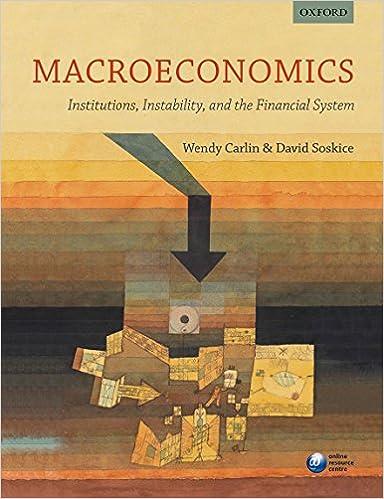This question uses the Macroeconomic Simulator available from the Carlin and Soskice website http://www.oup.com/uk/orc/carlin-soskice to model supply-side
Question:
This question uses the Macroeconomic Simulator available from the Carlin and Soskice website http://www.oup.com/uk/orc/carlin-soskice to model supply-side reform in the open economy. Start by opening the simulator and choosing the open economy (flexible exchange rate) version. Then reset all shocks by clicking the appropriate button on the left hand side of the main page. Use the simulator and the content of this chapter to work through the following questions:
(a) Decide on a supply-side reform and describe briefly how it is modelled-i.e. does it affect the WS or PS? What effect does this have on the ERU curve?
(b) Apply a permanent \(2 \%\) positive supply shock. (Note that a positive supply shock is one that reduces equilibrium unemployment; raises equilibrium employment.)
(c) Use the impulse response functions from the simulator or from your sketches to help explain the path of the economy following the above shock.
(d) Draw the \(I S-R X\) and \(P C-M R\) diagrams for this scenario. Draw the \(A D-E R U\) diagram for this scenario. [Hint: the path of the key variables (output, inflation, real interest rate, real exchange rate) will have to match the impulse response functions from the simulator. Remember that whenever the central bank sets the interest rate different from \(r^{*}\) to get the economy on to the MR curve, the economy will be off the \(A D\) curve. Once the economy is back at a MRE, then \(r=r^{*}\) and the economy is, once again, on the AD curve.]
(e) Briefly discuss one aspect of this way of modelling the adjustment of the economy to a supply-side reform that seems to you to be unrealistic. Express your concern in terms of the assumptions of the model.
Step by Step Answer:

Macroeconomics Institutions Instability And The Financial System
ISBN: 9780199655793
1st Edition
Authors: Wendy Carlin, David Soskice




